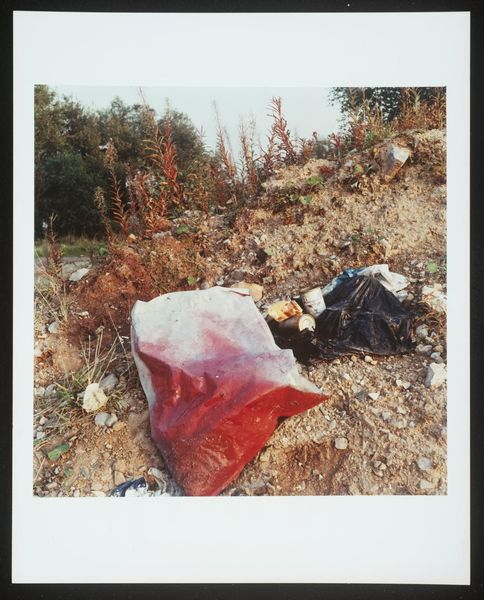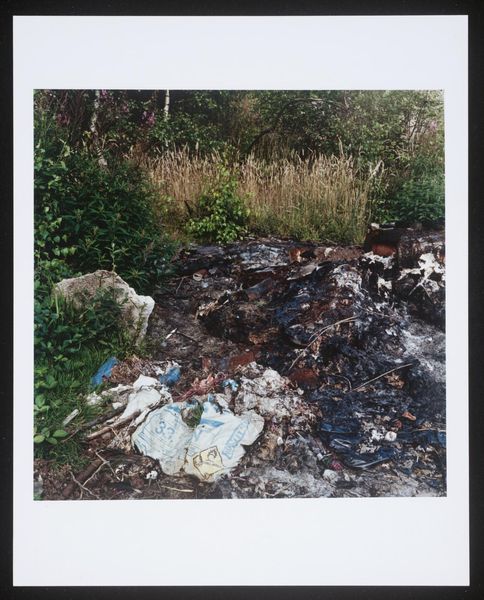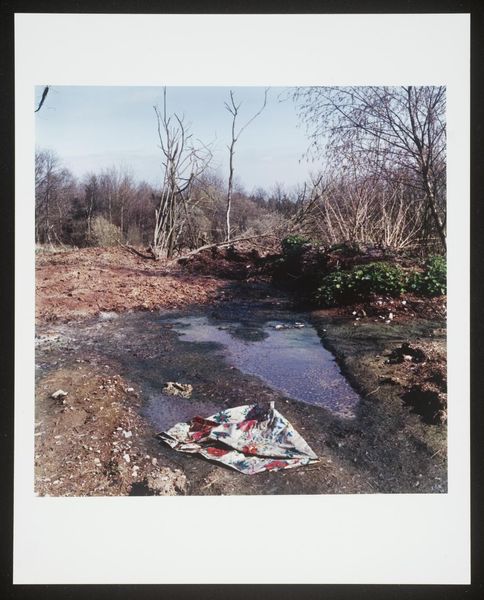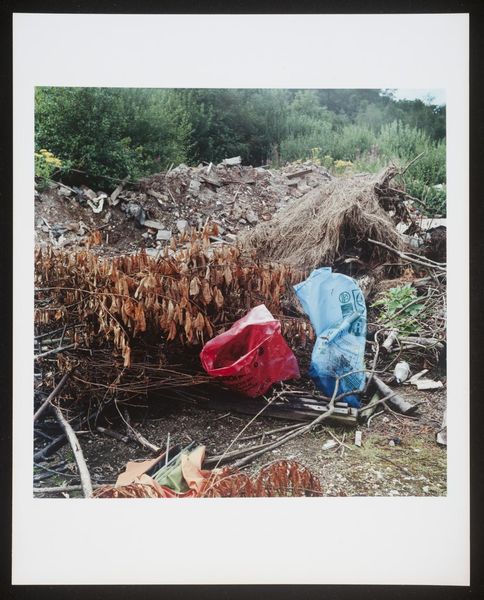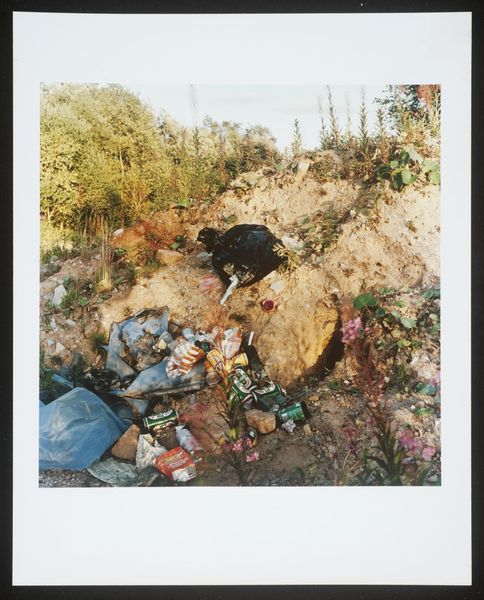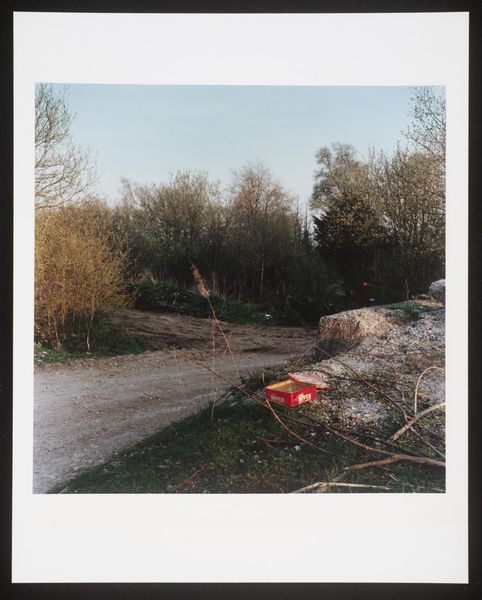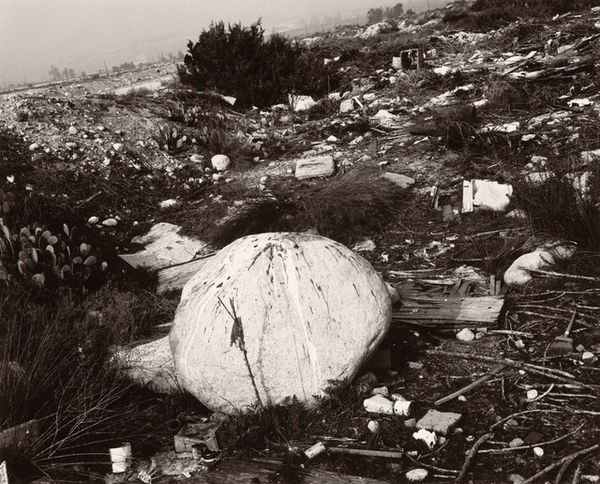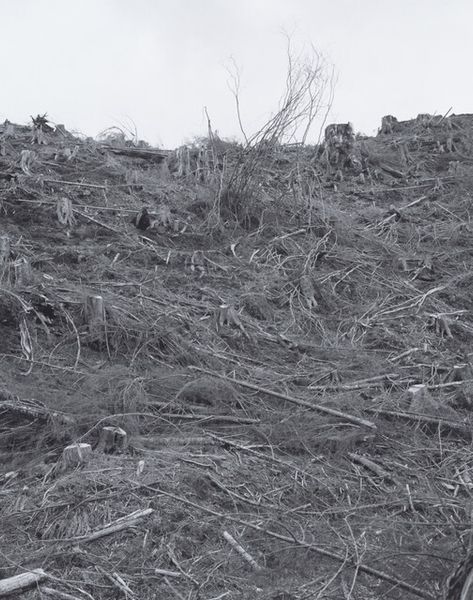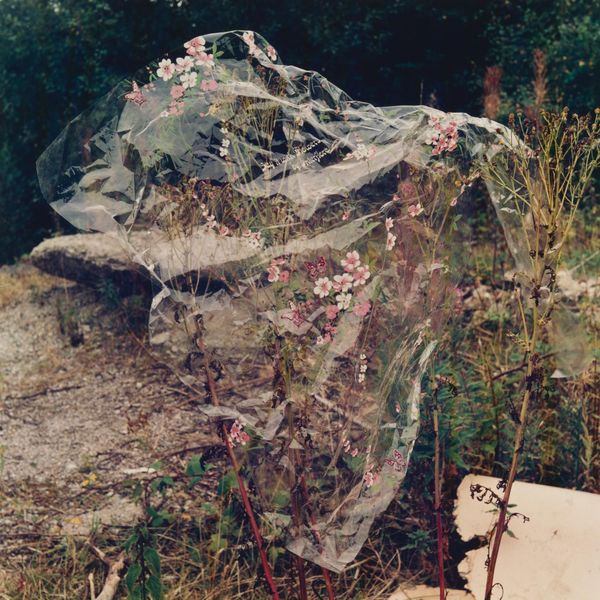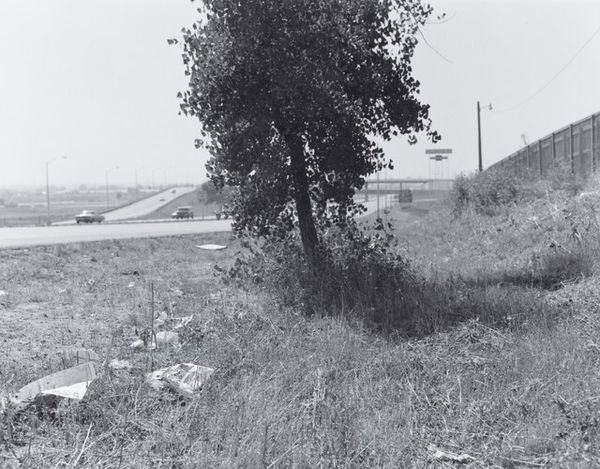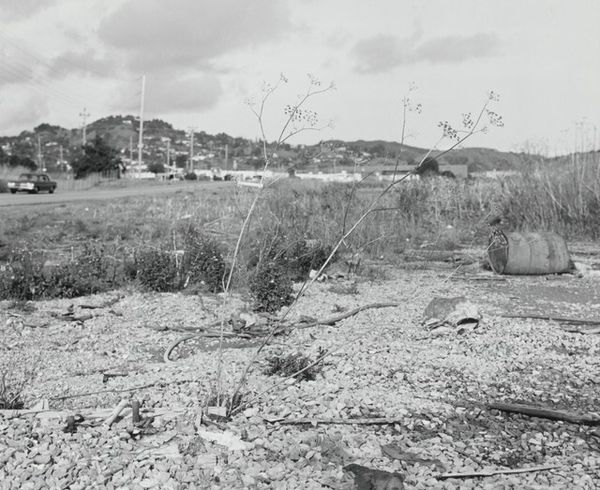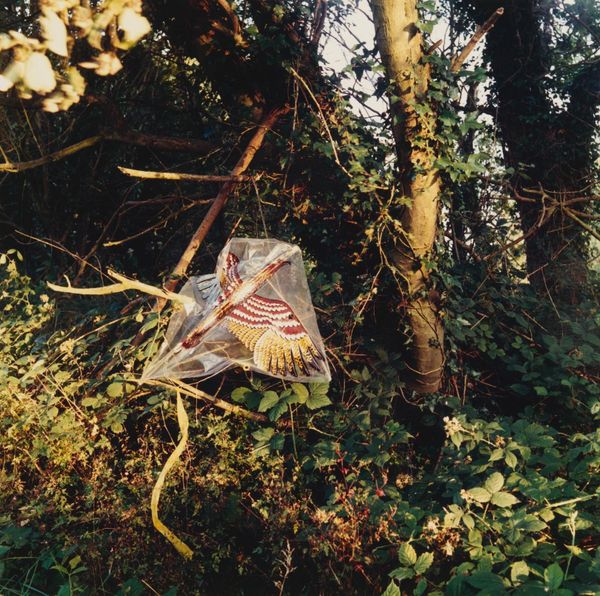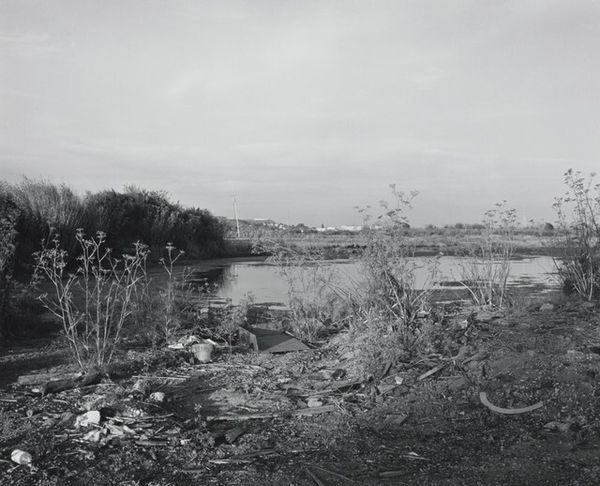
Dimensions: support: 254 x 202 mm
Copyright: © The estate of Keith Arnatt | CC-BY-NC-ND 4.0 DEED, Photo: Tate
Editor: So, we have Keith Arnatt’s photograph, "Miss Grace's Lane," currently at the Tate. It strikes me as a rather grim depiction of nature, littered with trash. What do you make of it? Curator: It's fascinating how Arnatt uses photography to confront us with the often-unseen consequences of consumerism on the natural landscape. How do you think the title, "Miss Grace's Lane," plays into this juxtaposition? Editor: Perhaps it’s ironic, highlighting the loss of idyllic beauty? I hadn’t considered how directly the title informs the reading of the work. Curator: Precisely. Arnatt challenges our romanticized notions of the countryside, revealing the uncomfortable reality of waste within it. Reflect on the role that art can play in addressing such social issues. Editor: I guess it's a call to action, showing us what we often choose to ignore. Thank you.
Comments
tatebritain 7 months ago
⋮
http://www.tate.org.uk/art/artworks/arnatt-miss-graces-lane-t13166
Join the conversation
Join millions of artists and users on Artera today and experience the ultimate creative platform.
tatebritain 7 months ago
⋮
In Miss Grace’s Lane, Keith Arnatt presents natural beauty and environmental degradation side by side. ‘I am very fond of paradox’, the artist notes. Using his camera to achieve a large depth of field, Arnatt gives equal importance to all elements, setting out to create ‘pictures which are not chaotic out of chaos’. One image shows rubbish strewn across the English landscape, bathed in soft, golden hour light. The series references Romanticism, the nineteenth-century art movement inspired by human psychology, personal expression and the natural world. Arnatt parodies the sublime landscapes of British painters like Samuel Palmer (1805–1881), combining the picturesque and the polluted. Gallery label, November 2024
